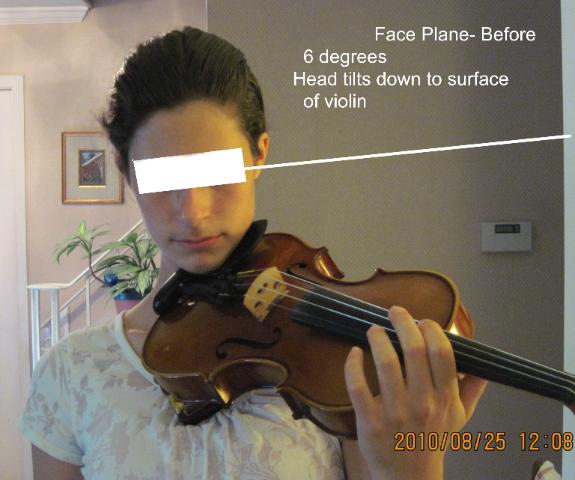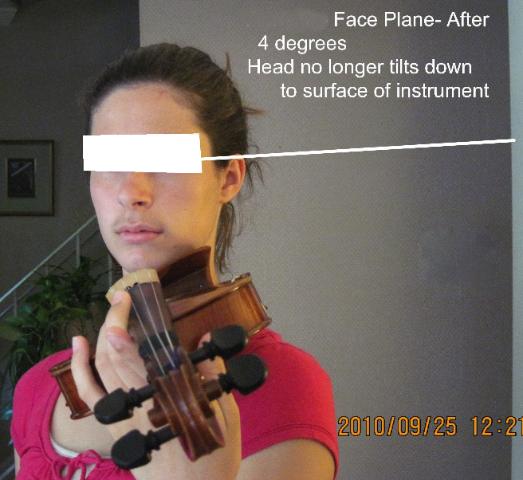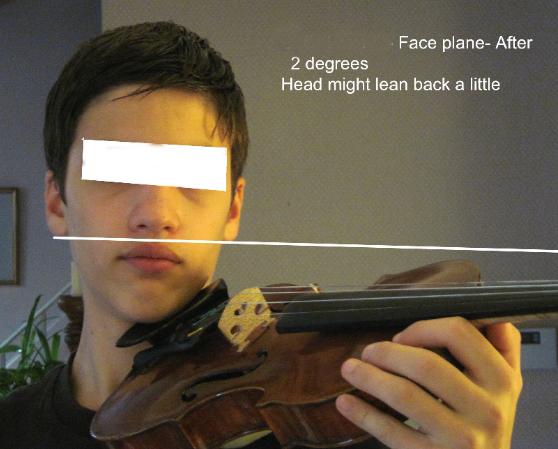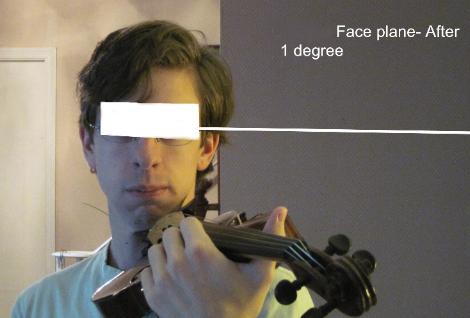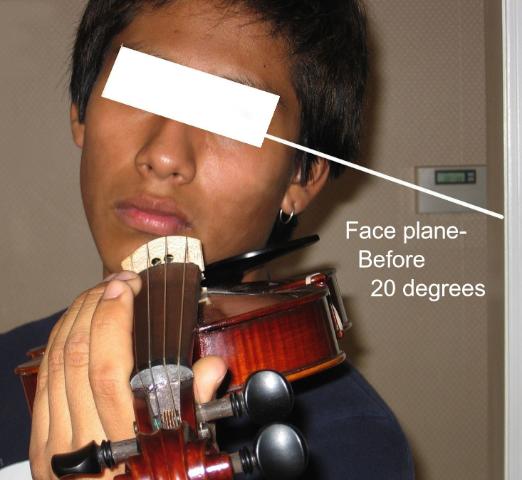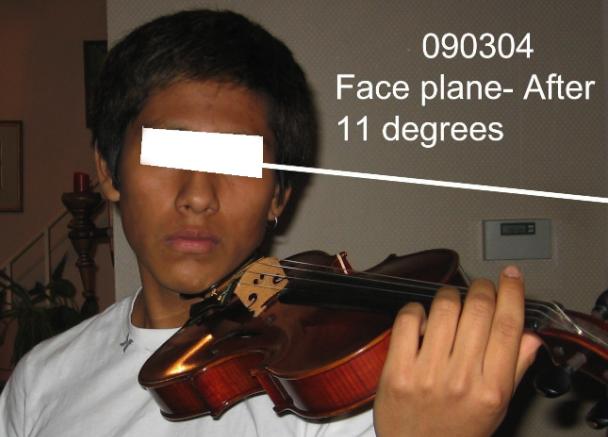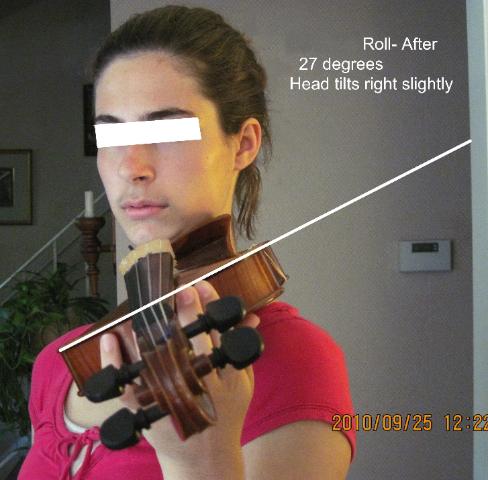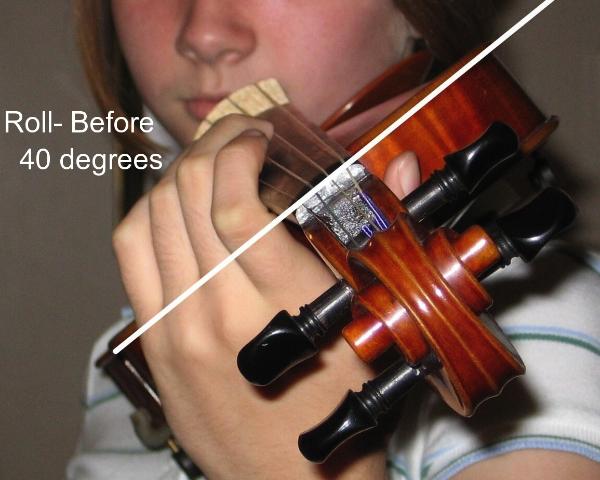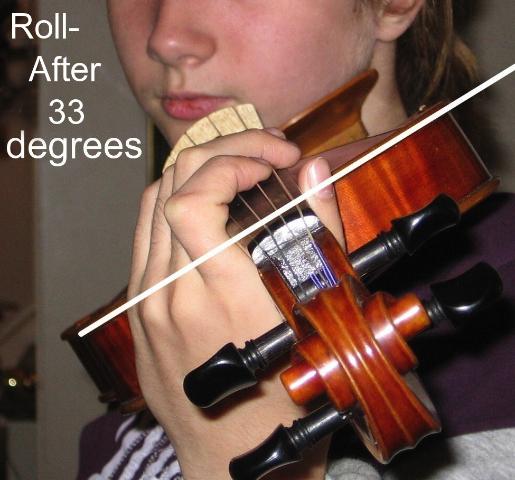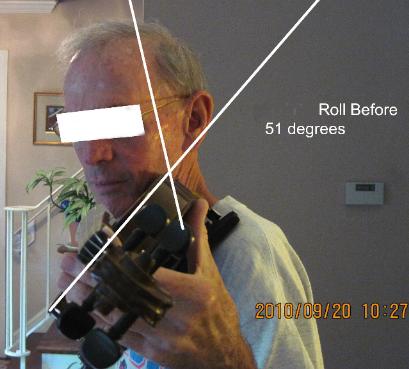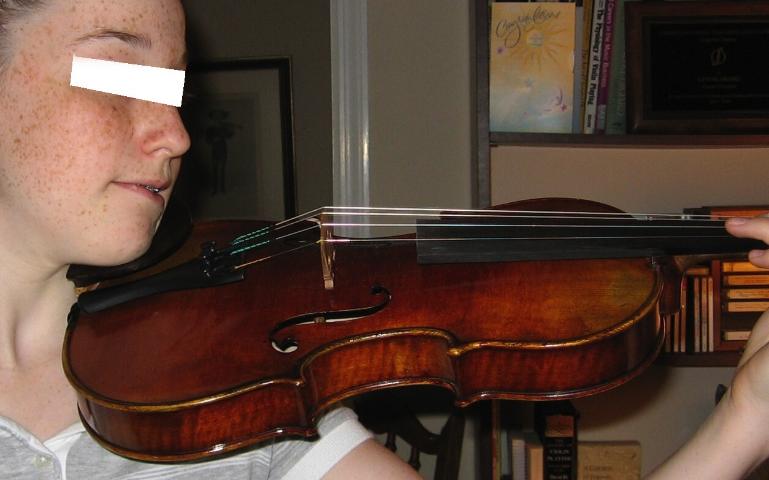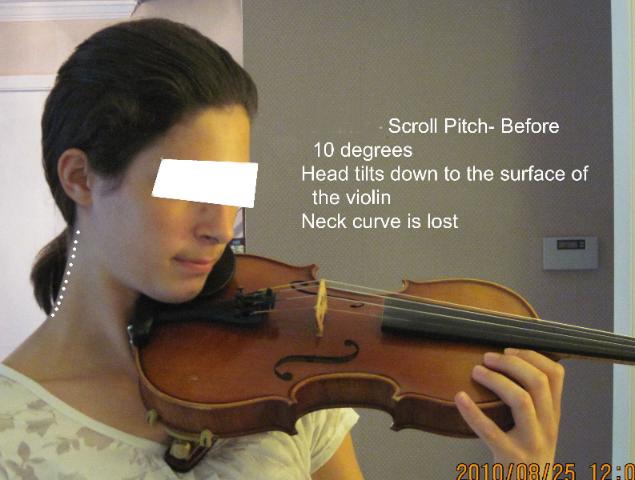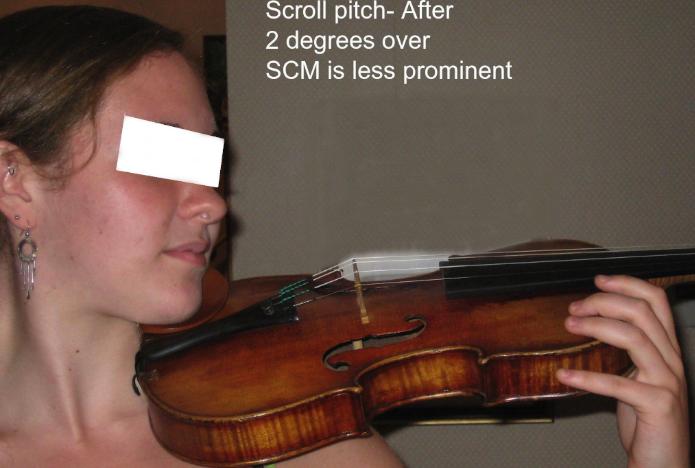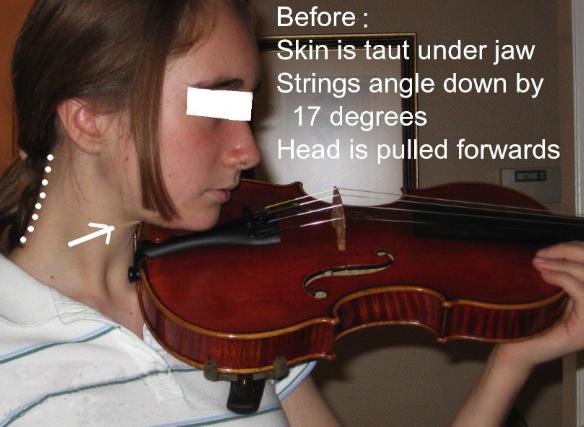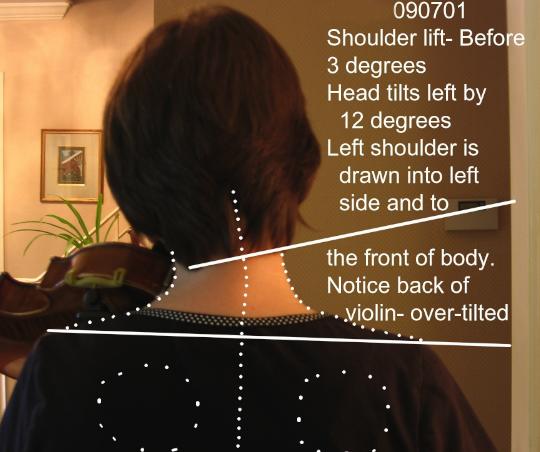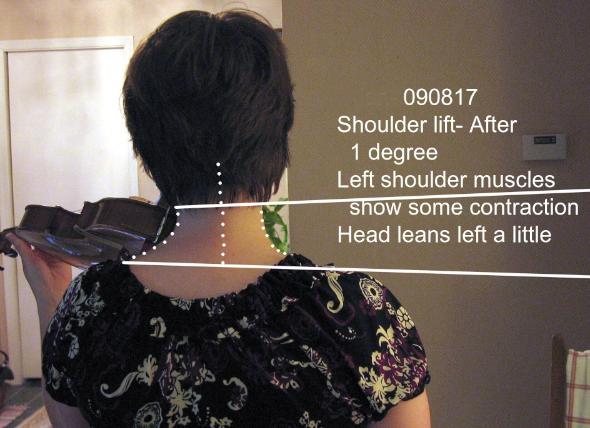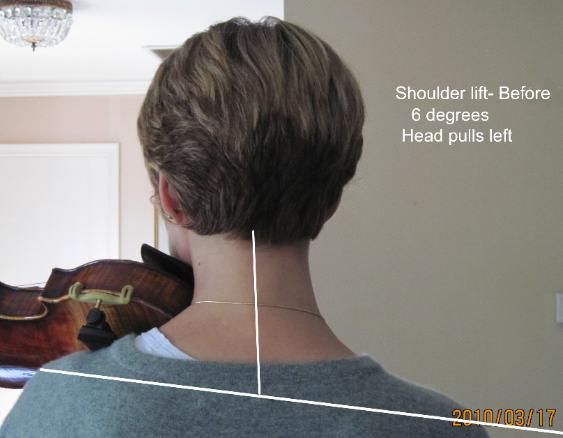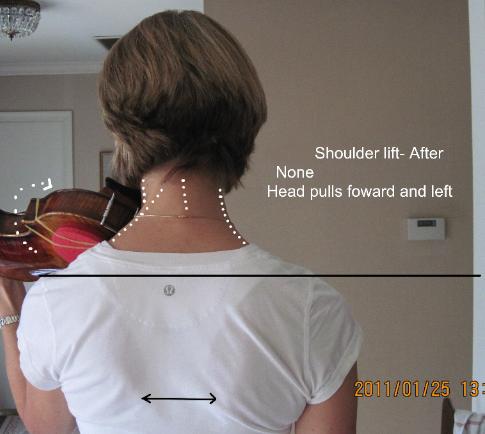Face Plane Before
This young man's head position says that he is desparately looking for a place of security and comfort on a chinrest that does not fit him. Head positions tilted right or left, up or down, or pulled forward for a long time lead to pain. Best is a head position that changes according to movements of the bow hand.
Photo Credit: Lynne Denig
Roll After
Now that the violin is flatter and the hard shoulder pad feet are no longer covering the violin, sound improves and gravity can be used to get a better, easier spiccato. Note that the left shoulder does not touch the back of the violin. The shoulder joint is free to move.
Photo Credit: Lynne Denig
Roll Before
Due to the hard shoulder pad pushing up on the shoulder side of the instrument, the roll is excessive. Loss of bow arm balance into the top of the string is the result. Sound and spiccato suffer. Notice also that the bridge is slightly higher than the mouth. When instrument altitude is increased and the hand to mouth relationship is upset, the bow arm must work harder. Sound and musical nuance suffer. Left hand must also reach farther over the bouts in shifting.
Photo Credit: Lynne Denig
Roll After
With the chinrest shaped and lifted to fit the player's neck and jaw and with no hard shoulder pad, the roll (tilt of the instrument down to the highest string) is flatter. Sound will improve and spiccato will be more easily produced. Notice that the bridge is now below mouth level. Bow arm and left hand are now in a more neutral position and will function with less strain.
Photo Credit: Lynne Denig
Scroll Pitch Before
With equipment working against her, this player experienced pain when practicing and playing. Note that the curve at the back of the neck is missing and that the scroll droops. Scroll droop asks the bow hand to over-stabilize the bow as the bow tries to drift over the fingerboard. Bow hand flexibility is hindered and musical scope is narrowed.
Photo Credit: Lynne Denig
Scroll Pitch After
With equipment appropriate to jaw shape and neck height, this player can now stand her full height. The very healthy curve at the back of her neck is now present, and the head is free to counterbalance movements of the bow arm. String height is more parallel to the floor and the bow hand is free for artistic touches.
Photo Credit: Lynne Denig
Scroll Pitch After
Without the hard shoulder pad and with a chinrest of good shape and height, the scroll is now kept at actually a slightly too-high level. But the difference is very striking between "before" and "after", and instrument balance is done so much more easily than with the old equipment.
Photo Credit: Lynne Denig
Forward head- resolved
The new chinrest has yielded a head that is lightly balanced against the back ridge of the chinrest. Head weight is no longer constant, but rather, it is added into the chinrest as needed (as in shifts down or in dramatic vibrato). The back of the neck has regained some of its healthy, flexible curve.
Photo Credit: Lynne Denig
Shoulder Lift- After
A chinrest of a different height and shape and also getting rid of the hard shoulder pad have led to huge improvement in playing angles. The head angle is straighter up, the shoulders are released, and the violin is flatter. Playing time pain free has improved.
Photo Credit: Lynne Denig
View more

